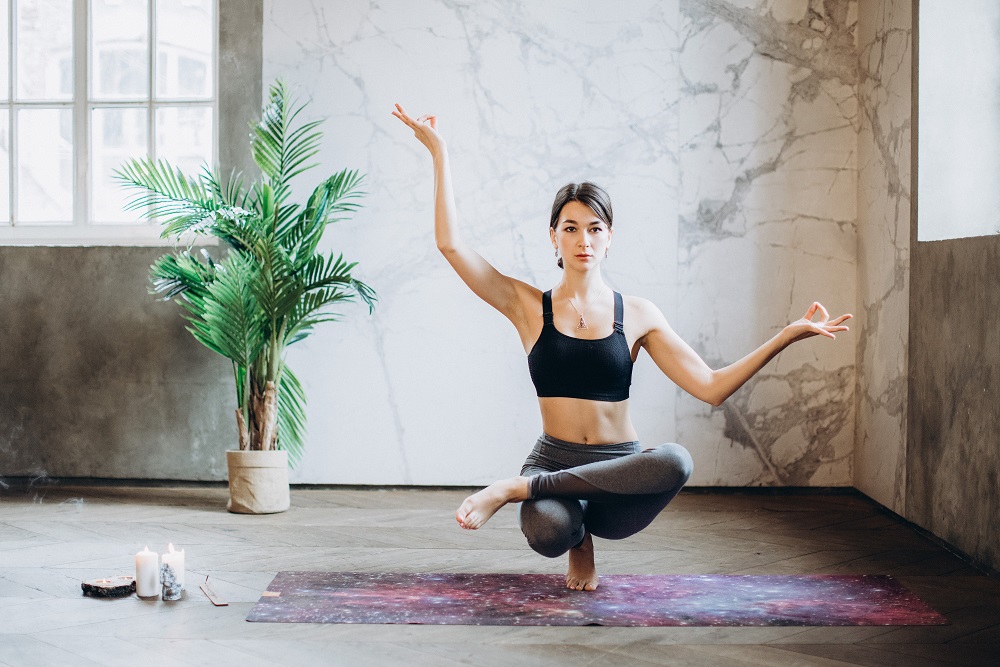Are you an athlete looking to take your performance to the next level? Look no further than yoga! While you may think of yoga as just a relaxing way to stretch, it can actually have a significant impact on your athletic abilities. From improving flexibility and preventing injury to enhancing your mind-body connection, we’re diving into all the ways that yoga can benefit athletes of all levels. So roll out your mat and let’s get started!
What is Yoga?
Yoga is an ancient practice that originated in India. The word yoga comes from the Sanskrit word yuj, which means “to yoke” or “to unite.” Yoga is a system of physical and mental disciplines that aim to integrate the mind, body, and spirit.
The physical practices of yoga are designed to prepare the body for deeper levels of spiritual practice. The poses (asanas) stretch and tone the muscles, while the breath work (pranayama) calms and clears the mind. In addition to the physical benefits, yoga also helps to improve flexibility and enhances mind-body connection.
For athletes, these benefits can be particularly helpful in improving performance and preventing injuries. The stretches and poses help to increase range of motion, while the focus on breath can help improve focus and concentration. The mind-body connection can also help athletes to better understand their bodies and how to move efficiently.
The Different Types of Yoga
There are a variety of yoga styles, each with its own focus and benefits. Ashtanga, Bikram, and Kundalini are some of the most popular types of yoga.
Ashtanga: Ashtanga is a fast-paced, physically demanding form of yoga. It is characterized by a set series of poses that are linked together by breath. Ashtanga is an excellent workout for building strength and flexibility.
Bikram: Bikram yoga is also known as “hot yoga.” It is practiced in a room heated to approximately 105 degrees Fahrenheit. The heat helps loosen muscles and promote sweating, which can flush toxins from the body. Bikram is an intense workout, and beginners should be prepared for a challenging practice.
Kundalini: Kundalini yoga focuses on awakening the energy centers (chakras) along the spine. This type of yoga emphasizes breathwork, mantra chanting, and meditation. Kundalini can be both physically and spiritually challenging, but the rewards can be great.
The Benefits of Yoga for Athletes
The benefits of yoga for athletes are many and varied. From improving flexibility and range of motion to developing a stronger mind-body connection, the advantages of incorporating yoga into your training regime are significant. For athletes who are looking to improve their performance and prevent injury, yoga is an excellent complement to their existing workout routine.
Yoga can help improve flexibility and range of motion by lengthening tight muscles and increasing joint mobility. This is especially beneficial for athletes who participate in sports that require a high degree of flexibility, such as gymnastics or diving. Yoga can also help to increase core strength and stability, which can improve balance and coordination.
In addition to physical benefits, yoga can also help improve mental focus and concentration. The deep breathing exercises practiced in yoga can help calm the mind and allow athletes to clear their thoughts before competition. The mind-body connection developed through yoga can also help athletes become more aware of their bodies and how they move through space, which can lead to improved performance.
How to Get Started with Yoga

If you’re an athlete looking to improve your flexibility and mind-body connection, yoga is a great option. Here’s how to get started:
1. Choose a yoga style that fits your needs. There are many different types of yoga, so it’s important to find one that’s right for you. If you’re looking to improve your flexibility, for example, Ashtanga or Iyengar yoga might be a good choice.
2. Find a teacher who you feel comfortable with. Yoga is best learned from a qualified teacher who can give you individual attention and help you progress safely.
3. Start with the basics. Unless you have experience with yoga, it’s important to start with the basics and gradually work your way up to more advanced poses. Don’t try to do too much too soon – it’s important to listen to your body and go at your own pace.
4. Be patient and consistent. Like with any new endeavor, it takes time and practice to see results from yoga. Be patient and consistent in your practice, and you’ll eventually see the benefits in both your physical and mental health.
Yoga Poses for Athletes
There are a number of different yoga poses that can be beneficial for athletes. Some of these poses can help to improve flexibility, while others can help to improve the mind-body connection.
One pose that can help to improve flexibility is the Camel Pose. This pose helps to open up the chest and shoulders, which can be helpful for athletes who often have tightness in these areas. Another pose that can help with flexibility is the Triangle Pose. This pose helps to stretch out the legs and hips, which can be beneficial for athletes who run or cycle frequently.
Poses that can help to improve the mind-body connection include the Warrior Pose and the Mountain Pose. The Warrior Pose helps to promote focus and concentration, while the Mountain Pose helps to promote balance and stability. Both of these poses can be beneficial for athletes who need to maintain focus during their competition.
Tips for Practicing Yoga as an Athlete
1. Start with a basic yoga routine and gradually work your way up to more difficult poses.
2. Pay attention to your breath and focus on keeping your mind in the present moment.
3. Be patient and consistent with your practice, and don’t be discouraged if you don’t see results immediately.
4. Listen to your body and only do poses that feel comfortable for you.
5. Remember that yoga is not about competition, but rather about finding inner peace and balance.
Conclusion
Yoga is a great way to improve flexibility and mind-body connection for athletes, as it can help to create a balance between physical and mental strength. Additionally, yoga helps build core strength, increases range of motion, improves posture and balance, aids in injury prevention and recovery, reduces stress levels and boosts confidence overall. With these benefits in hand, any athlete looking to enhance their performance should look into the practice of yoga – it’s an investment worth making!








